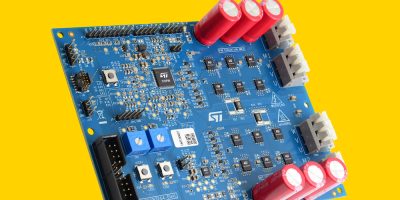Mouser Electronics, explores the latest developments, advancements and challenges in electric and hybrid vehicle technology through its EV/HEV resource hub. Staying ahead in this rapidly evolving industry is crucial for engineers and innovators. With advancing technologies like bi-directional charging and vehicle autonomy entering the market, it’s more important than ever to stay up to speed. Mouser’s EV/HEV resource hub offers a wealth of content, including eBooks, blogs, articles, products, and more, all designed to keep engineers at the forefront of these technological advancements.
Across the globe, electric vehicles (EV) and hybrid electric vehicles (HEV) are changing not just the way people drive but also the way people live. Electric infrastructure is advancing with the use of emerging technologies, such as liquid-cooled HPC connectors, while still maintaining the latest industry standards and lowering maintenance costs. This development empowers the future of eMobility, as discussed in Mouser’s interactive content series Electrifying the Future of eMobility, exploring how current renewable energy sources and evolving technologies like hydrogen electrolysis are driving toward a net-zero future.
The EV/HEV technology content hub offers engineers easy access to resources from Mouser’s technical team and leading manufacturers. In a recent eBook with TE Connectivity, EV and Connected Transportation, industry experts explain the tandem movement of e-mobility and connected travel via new standards and the use of the V2X ecosystem to make more efficient, accurate, and safer roads for vehicles. The benefits and challenges of designing solutions for the future of transportation are discussed in depth, including the differences in wireless charging and battery swapping in green freight technology.
Automotive
Arrow Electronics and NVIDIA collaborate on new AI-Based steering system for SAM Car
Arrow Electronics has designed a first-of-its-kind, AI-powered steering system. Powered by an advanced NVIDIA processor, it uses facial recognition technology to control the latest SAM (Semi-Autonomous Mobility) Car.
Quadriplegic racecar driver Sam Schmidt recently drove at competitive speeds using the new system that he steers through head motions. Arrow engineers developed the new steering system using the latest NVIDIA Jetson AGX Orin module, the only platform capable of delivering the high accuracy and low latency needed to control a car at speeds up to 213 mph.
A low-profile stereo camera pair located on the dash captures Schmidt’s movements in real time and feeds the data to the NVIDIA module. Using machine learning, the system processes the information and adjusts the steering angle automatically – within a few thousandths of a second.
The new AI steering replaces the car’s original four-camera steering that used an older, infrared motion-capture based technology.
“With the AI, it’s more controllable,” said Schmidt. “There’s no lag. It’s instantaneous for high speed.”
The steering enhancements could have everyday applications far beyond the racetrack. The technology could be used to control vehicles and large equipment in settings as different as farming, warehouses, public transit and construction so the operator – physically disabled or not – could perform multiple tasks.
“The SAM Car has evolved into a technology platform that really personifies enabling the benefit of technology for as many people as possible,” said Murdoch Fitzgerald, Arrow vice president of global engineering and design services.
Microchip adds 12 Products to its wireless portfolio that reduce barriers to Bluetooth integration
System designers face many barriers when adding Bluetooth functionality to their products, from skill and resource limitations to budget constraints to time-to-market pressures to challenging performance and integration requirements. Microchip has expanded its Bluetooth Low Energy portfolio with 12 new products, aimed at providing designers with an extensive array of choices to tackle their unique challenges, effectively lowering barriers across designs spanning from the simplest to the most advanced. These additions include the RF-ready WBZ350 module and the PIC32CX-BZ3 SoC that offers the lowest entry point available for integrating a Bluetooth Low Energy microcontroller (MCU) into product designs. For a list of all 12 products see Microchip’s Bluetooth Low Energy webpage.
In addition to its Bluetooth MCUs, Microchip introduced the RNBD350 plug-and-play module that reduces the cost and complexity barriers to adding Bluetooth Low Energy connectivity to product designs. These modules minimise the time, money and engineering resources required for RF design optimisation, regulatory certification and software development.
Sample applications for Microchip’s Bluetooth Low Energy parts include IoT smart home and building systems, Industrial IoT (IIoT) solutions and automotive designs.
Designers using the newly expanded Bluetooth Low Energy portfolio for entry-level applications benefit from an easy development process, including in-house support services and development tools, without compromising Bluetooth functionality.
Developers can also tap into Microchip’s expanding wireless portfolio for end-to-end solutions. The portfolio offers a range of products in popular wireless technologies like Wi-Fi, Zigbee, Thread and sub-GHz that are designed to work seamlessly with the Bluetooth portfolio.
New demonstration board from ST kickstarts dual-motor designs
ST’ EVSPIN32G4-DUAL demonstration board controls two motors from a single STSPIN32G4 integrated driver, accelerating product development and simplifying the PCB design and bill of materials.
The EVSPIN32G4-DUAL board cuts the time to market for advanced industrial and consumer products such as robots, multi-axis factory automation systems, garden equipment, and power tools. The STSPIN32G4 motor controller contains an Arm Cortex-M4 microcontroller (MCU) with the processing power to manage both motors simultaneously, executing complex algorithms like field-oriented control (FOC) in real-time. In addition, MCU peripherals support sensored or sensorless FOC and advanced position and torque-control algorithms, including motor-control and general-purpose timers, analog functions including operational amplifiers and comparators.
The EVSPIN32G4-DUAL demonstration board leverages an advanced three-phase gate driver integrated in the STSPIN32G4 and an additional STDRIVE101 gate driver to control two three-phase inverters delivering up to 10A with a maximum supply voltage of 74V. Both gate drivers have their own bootstrap circuitry and safety features including drain-source voltage monitoring, cross-conduction prevention, several thermal protection mechanisms, and under-voltage lockout (UVLO).
EVSPIN32G4-DUAL also leverages the STSPIN32G4’s built-in power-management circuitry, permitting a compact design with a low BOM that is easy to procure and permits rapid assembly in production. The power management includes a programmable buck converter for gate drivers VCC supply, a low-dropout linear regulator, and a special regulator with low quiescent current to supply the MCU during standby.
The STSPIN32G4 is included in the STM32 ecosystem that provides extensive support for application development, including tools for starting the project, middleware packs, and software examples. The X-CUBE-MCSDK (motor control software development kit) has firmware libraries for algorithms including FOC and STM32 motor-control workbench. This is an easy-to-use graphical tool that lets the user select and automatically configure the EVSPIN32G4-DUAL directly from a menu.
About Smart Cities
This news story is brought to you by smartcitieselectronics.com, the specialist site dedicated to delivering information about what’s new in the Smart City Electronics industry, with daily news updates, new products and industry news. To stay up-to-date, register to receive our weekly newsletters and keep yourself informed on the latest technology news and new products from around the globe. Simply click this link to register here: Smart Cities Registration







